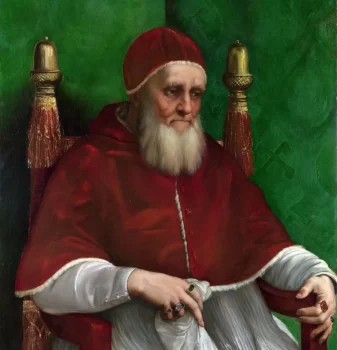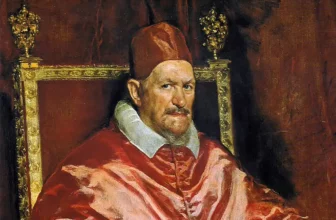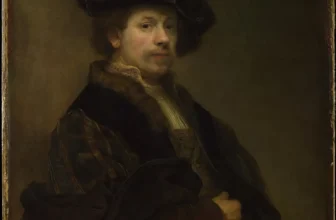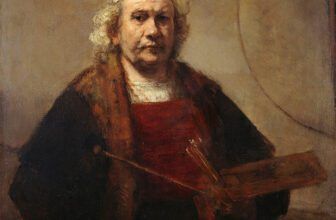Portrait of Pope Julius II by Raphael: Story, Meaning & Legacy
| Invest in Hidden Masterpiece: Rare Antique Oil Paintings For Sale. Limited Originals Available 💰😊 Are you looking for authentic hidden masterpiece? Explore old master antique oil paintings from the Renaissance and Baroque eras. From 16th-century portraits to 18th-century landscapes. Authenticity guaranteed, Old Master antique oil paintings for sale. Shop Now! 🎨 Renaissance And Baroque Art Landscape Antique Paintings Old Master Portrait Paintings |
Few Renaissance artworks capture the raw humanity of power as masterfully as Raphael’s Portrait of Pope Julius II. Painted in 1511–1512, this iconic image of the “Warrior Pope” remains one of the most psychologically rich papal portraits ever created. With its penetrating gaze, somber mood, and revolutionary composition, Raphael’s masterwork changed how leaders were represented in Western art. Today, the Portrait of Pope Julius II stands not only as a window into the personality of one of the most influential popes in history, but also as a landmark of Renaissance portraiture.
This article explores the story behind the painting, Raphael’s artistic process, the symbolism and meaning, the controversies, and why the portrait continues to fascinate viewers today.
The Story Behind Raphael’s Portrait of Pope Julius II
The story of the painting is deeply tied to the turbulent life of Pope Julius II, born Giuliano della Rovere. Known as Il Papa Terribile (“the Terrible Pope”), Julius II was one of the most powerful and aggressive pontiffs of the Renaissance. He waged wars, reshaped geopolitics, rebuilt the city of Rome, and became one of the greatest artistic patrons of all time, commissioning the Sistine Chapel ceiling, Raphael’s Stanza della Segnatura, and beginning the construction of St. Peter’s Basilica.
Yet behind the armor, ambition, and political fire was a man exhausted by conflict and burdened by responsibility.
Around 1511, Julius II fell gravely ill. Fears of his death spread across Rome and the surrounding territories. During this period of vulnerability, he summoned the young Raphael Sanzio, then in his late twenties and already celebrated for his clarity of form, grace, and humanity.
The result was a portrait unlike any papal image before:
not triumphant,
not adorned with regalia,
not enthroned in majesty,
but solemn, intimate, and contemplative.
This is the Julius the world was not meant to see, the man beneath the tiara.
Who Painted the Portrait – Raphael’s Role
The Portrait of Pope Julius II was painted by Raffaello Sanzio da Urbino, known simply as Raphael, one of the three great masters of the High Renaissance alongside Leonardo da Vinci and Michelangelo.
How Raphael Painted It
Raphael approached the portrait using techniques inspired partly by Leonardo’s psychological depth but transformed with his own unique softness and balance. The painting is executed in oil on wood panel. Raphael likely painted the Pope from life, as the intimate expression suggests close, prolonged sittings.
Key aspects of Raphael’s painting process include:
Controlled, subtle lighting that highlights the Pope’s face while fading the background into darkness.
Layered glazes to achieve soft textures, especially in the beard and skin.
Excellent observation of expression, especially the Pope’s slightly parted lips and tired eyes.
Precise rendering of fabrics, from the velvet cap and the shimmering red mozzetta to the fine gold embroidery.
Raphael’s genius lies in elevating a political and religious portrait into a deeply human narrative.
What the Portrait Represents – The Meaning Behind the Image
Although the painting shows Julius II seated in a three-quarter view, its real power lies in its emotional depth. Rather than presenting the Pope as a triumphant ruler, Raphael reveals:
1. Vulnerability and Weariness
Julius’s expression conveys:
fatigue,
melancholy,
contemplation,
the weight of leadership.
This was radical for the time. Popes were almost never shown as fragile or human.
2. Psychological Complexity
The portrait highlights the duality of Julius II:
a fierce, ambitious commander,
and an aging leader dealing with illness, fear, and legacy.
3. Mortality
This was painted when Julius believed he might be dying. His somber posture and lowered gaze suggest deep reflection on spiritual matters, responsibility, and the end of life.
4. Power in Restraint
Despite the vulnerability, the image radiates authority, through:
the rich red tones,
the papal insignia,
the luxurious fabrics,
and the Pope’s steady, thoughtful demeanor.
It is a portrait of a man who holds great power but is temporarily subdued by the weight of it.
Symbolism in Raphael’s Portrait of Julius II
The painting contains rich symbolism that enhances its emotional and narrative depth.
The Beard
Julius II is shown with a full white beard, which he grew after losing the city of Bologna as a symbolic gesture of mourning. This was highly unusual for a medieval or Renaissance pope. The beard symbolizes:
humility,
penitence,
personal grief,
and the recognition of loss.
The Chair and the Acorn Finials
The acorn decorations on the chair’s finials reference the della Rovere family emblem (“rovere” means oak in Italian). This symbol conveys:
lineage,
power,
and the Pope’s family pride.
The Rich Red Garments
The colors are more than decorative:
Red signifies authority and the Holy Spirit.
Gold detailing represents divine illumination and papal wealth.
Raphael’s mastery of textile rendering emphasizes Julius’s status, yet the muted mood avoids portraying him as triumphant or boastful.
The Position of the Hands
The Pope’s hands loosely hold a handkerchief, subtly indicating anxiety or physical weakness. These are not the stiff ceremonial hands of traditional papal portraits; they are the hands of a tired man.
The Downward Gaze
Rather than staring outward with dominance, Julius’s gaze is inward. This symbolizes introspection, doubt, and the burdens of leadership.
What Type of Art Is the Portrait of Pope Julius II?
The painting is considered a masterpiece of:
High Renaissance Portraiture
It exemplifies the High Renaissance approach:
naturalism,
psychological insight,
balance,
harmonious composition,
and technical mastery.
Psychological Portraiture
The work revolutionized papal portraiture by introducing deep emotional realism.
Official Portraiture with Humanist Influence
Although it depicts a religious figure, the portrait is grounded in humanist principles, showing a human soul rather than merely an ecclesiastical symbol.
How the Painting Changed Papal Portraiture
Before Raphael, popes were often depicted:
frontally,
stiffly,
with overwhelming symbols of office.
Raphael introduced:
a three-quarter seated pose,
intimate emotional expression,
humble dignity rather than theatrical power.
This composition became the standard format for papal portraits for centuries. Even Titian and Velázquez followed Raphael’s model.
Controversies Surrounding the Portrait of Pope Julius II
While the painting itself was admired, several controversies surround it historically:
1. The Unusual Beard
Many contemporaries considered Julius’s beard inappropriate for a pope. Since popes were expected to be clean-shaven, the decision sparked debate and was viewed by some as undignified or symbolic of weakness.
2. The Raw Emotion
Showing a pope as tired and vulnerable was unprecedented and, to some, controversial. Critics feared it might diminish papal authority.
3. Misattribution and Copies
For centuries, there was confusion over:
which museum held the original,
which versions were studio copies,
and whether parts were repainted later.
Some speculated that assistants may have retouched areas, though Raphael is still universally recognized as the chief creator.
4. Political Implications
The portrait was used as a display of power during conflicts, particularly during Julius’s military campaigns. Critics accused the Vatican of using the painting as political propaganda despite its emotional tone.
People’s Opinions: How the World Received the Painting
Historical Reception
When the portrait was first displayed publicly, hung on feast days at the Church of Santa Maria del Popolo, it reportedly moved viewers to silence. Many early viewers found the image so lifelike that they felt as if Julius were physically present.
Giorgio Vasari, the famous Renaissance biographer, wrote that the painting:
inspired awe,
captured absolute realism,
and was one of Raphael’s most masterful works.
Art Historians Today
Modern scholars praise the portrait for:
its psychological depth,
emotional honesty,
groundbreaking style,
and subtle symbolism.
It is widely considered the most important papal portrait ever painted.
Public Opinion
Museum visitors frequently describe the painting as:
unexpectedly emotional,
haunting,
powerful in its quietness,
and astonishingly modern in feeling.
The combination of regal presentation and human vulnerability appeals to modern audiences who value authenticity in depictions of powerful figures.
Where Is the Portrait of Pope Julius II Located Today?
Today, the universally accepted original Portrait of Pope Julius II is housed in The National Gallery, London.
However:
A closely related version exists in the Uffizi Gallery, Florence.
Another variant is in the Palazzo Pitti.
The National Gallery version is considered Raphael’s primary original due to its quality, detail, and historical documentation.
Why the Painting Still Matters Today
The Portrait of Pope Julius II remains one of the most significant artworks of the Renaissance for several reasons:
1. It Humanizes Power
Raphael dared to show a leader:
weary,
thoughtful,
aging,
and human.
This was revolutionary.
2. It Redefined Portraiture
The composition became the model for nearly every papal portrait that followed.
3. It Captures a Turning Point in History
Julius II’s reign reshaped Rome and the Catholic Church. The painting is a visual document of a crucial era.
4. It Exemplifies High Renaissance Art
The balance of technique, emotion, symbolism, and aesthetic beauty is unmatched.
5. It Still Speaks to Contemporary Themes
Leadership, vulnerability, power, and personal burden are timeless subjects.
The Enduring Legacy of Raphael’s Portrait
Raphael’s Portrait of Pope Julius II is far more than a simple likeness of a pope, it is a deeply human story captured on wood and pigment. It reveals:
the frailty behind immense power,
the introspection of a leader at the edge of history,
and the artistic genius of Raphael at the height of his abilities.
The painting’s subtle symbolism, emotional resonance, and revolutionary composition have cemented it as one of the greatest portraits of all time. More than five centuries later, it remains a testament to the Renaissance belief that even the most powerful figures are human, and that art can reveal the soul behind the crown.





